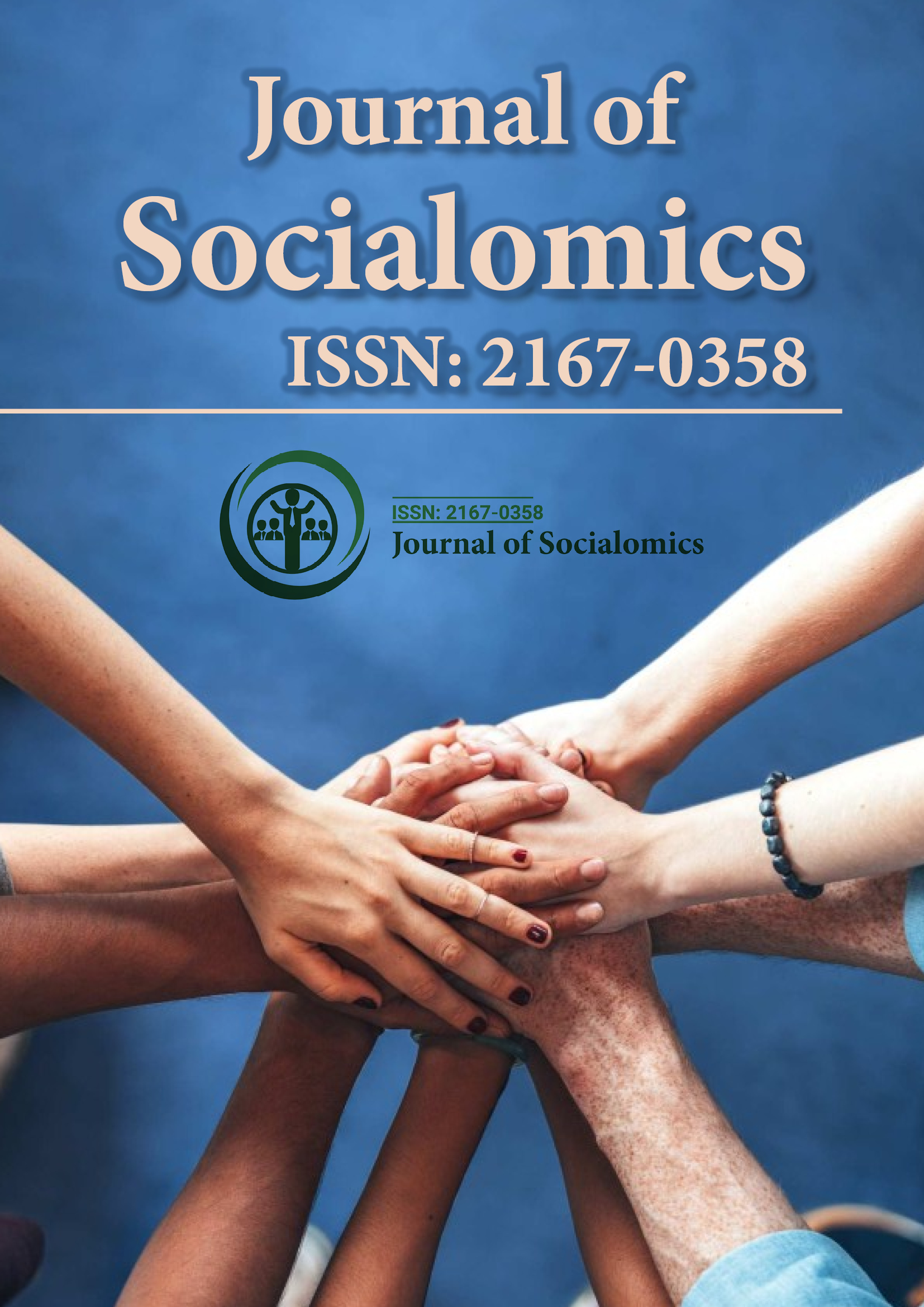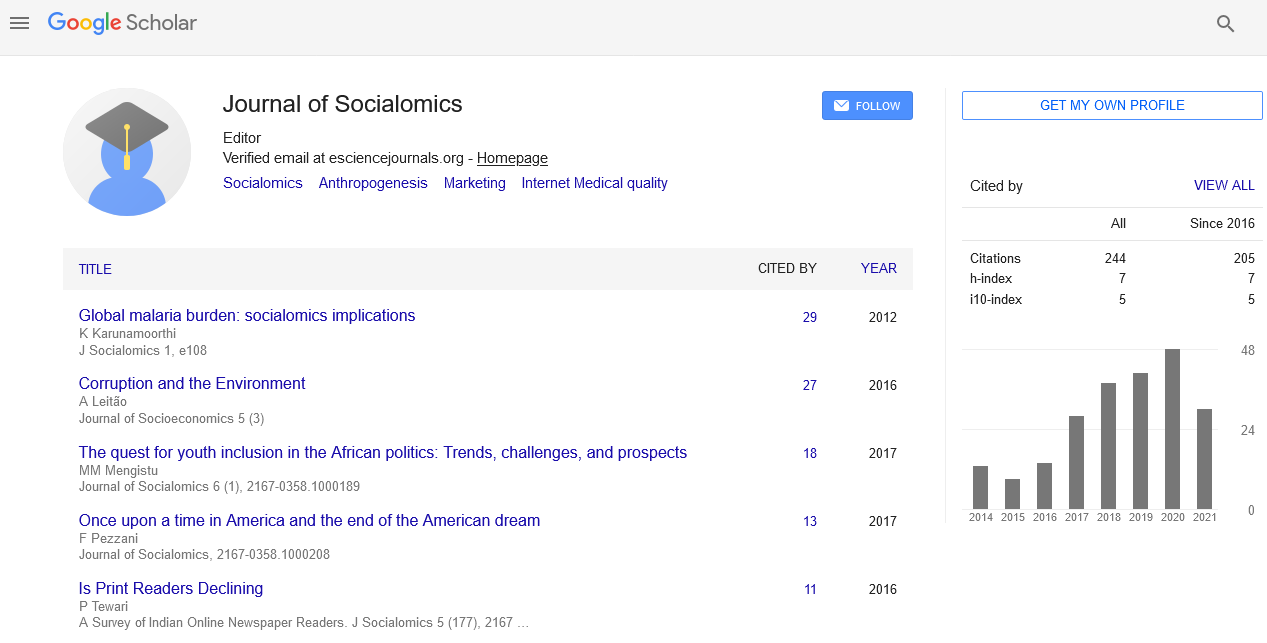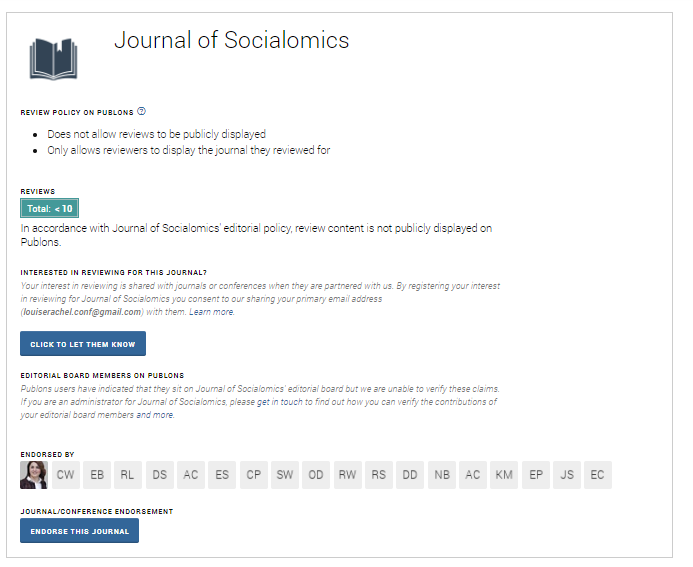Indexed In
- Open J Gate
- Genamics JournalSeek
- SafetyLit
- RefSeek
- Hamdard University
- EBSCO A-Z
- OCLC- WorldCat
- Publons
- Google Scholar
Useful Links
Share This Page
Journal Flyer

Open Access Journals
- Agri and Aquaculture
- Biochemistry
- Bioinformatics & Systems Biology
- Business & Management
- Chemistry
- Clinical Sciences
- Engineering
- Food & Nutrition
- General Science
- Genetics & Molecular Biology
- Immunology & Microbiology
- Medical Sciences
- Neuroscience & Psychology
- Nursing & Health Care
- Pharmaceutical Sciences
Commentary - (2024) Volume 13, Issue 4
The Role of Social Cognition in Understanding Social Media Addiction
Giulia Bocci*Received: 29-Nov-2024, Manuscript No. JSC-24-27888; Editor assigned: 02-Dec-2024, Pre QC No. JSC-24-27888 (PQ); Reviewed: 16-Dec-2024, QC No. JSC-24-27888; Revised: 23-Dec-2024, Manuscript No. JSC-24-27888 (R); Published: 30-Dec-2024, DOI: 10.35248/2167-0358.24.13.247
Description
Social media has reshaped how people connect, share and engage in the digital age. However, its constant presence has raised concerns, particularly around the development of addiction. Using a social cognition perspective, the formation of social media addiction can be examined through the mental processes that guide how individuals perceive, interpret and respond to social information in these digital spaces. These elements play into psychological tendencies, encouraging individuals to seek validation and social connection. The immediate feedback received from these platforms stimulates reward pathways in the brain, reinforcing repetitive use. Over time, this reinforcement can make users prioritize online interactions over real-world responsibilities or relationships. Social cognition helps illuminate how patterns of attention, memory and social perception contribute to this cycle.
One major factor in social media addiction is how users construct and maintain their online personas. Social media offers the ability to present idealized versions of oneself, carefully selecting images and posts to project a curated identity. This process often creates a feedback loop where individuals rely on likes and comments to validate their self-presentation, strengthening their attachment to the platform. Social cognition theories suggest that users internalize this external feedback and adjust their online behaviors to sustain the positive reinforcement. Over time, this need for validation can become a primary motivator, making it increasingly difficult for users to reduce their time spent on social media. Social comparison is another influential aspect. On social media, users are constantly exposed to content showcasing others’ achievements, lifestyles and experiences. In response, individuals may attempt to enhance their online presence or seek reassurance through interactions, further tying them to the platform. Social cognition explores how people process and interpret these comparisons, as well as how they react to perceived gaps between their own lives and the idealized images they see.
The Fear of Missing Out (FOMO), often referred to as FOMO, is another driver of excessive social media use. Many people feel compelled to stay updated on what others are doing, fearing exclusion or irrelevance. According to social cognition, FOMO stems from the desire to maintain social connections and avoid feelings of isolation. This fear leads to compulsive checking and prolonged engagement with social platforms, reinforcing habitual behavior. The attitudes and behaviors of peers, family and broader cultural norms can shape how individuals perceive and use these platforms. For example, if a person’s social circle places a high value on digital interactions, they may feel pressured to remain highly active online, even if it impacts their daily responsibilities. Social cognition examines the interplay between these external influences and personal beliefs, offering insights into how social expectations reinforce addictive behaviors.
Another contributing factor is the accessibility of social media. Smartphones and other devices make it possible to access these platforms anytime and anywhere, blurring the lines between online and offline life. This constant availability makes it harder for users to establish boundaries, leading to patterns of habitual checking and extended engagement. Social cognition theories explain how environmental cues and habitual responses reinforce behaviors, creating cycles that are difficult to break. To address social media addiction, it is essential to tackle the cognitive and social processes underlying its development. Raising awareness about usage patterns can help individuals recognize when their behavior becomes excessive. Setting boundaries, such as limiting screen time or designating technology-free zones, can also reduce dependency. Encouraging alternative activities, such as hobbies or face-to-face interactions, may help users balance their time and reduce reliance on social media for fulfillment.
Developing skills in emotional regulation is also critical. Teaching individuals how to manage stress and negative emotions without turning to social media can reduce its role as a coping mechanism. Strategies that promote mindfulness and self-reflection can help users evaluate their emotional responses and develop healthier habits. Furthermore, fostering critical thinking about social comparisons and online content can help mitigate feelings of inadequacy or FOMO. Encouraging users to question the authenticity of what they see on social media and focus on their personal goals rather than external validation may improve self-esteem and reduce compulsive behaviors.
The formation of social media addiction can be understood through the lens of social cognition, which examines how individuals process and respond to social information. Factors such as identity construction, social comparison, fear of missing outand emotional regulation all contribute to addictive behaviors. By understanding these mechanisms, individuals and society can develop strategies to mitigate the negative effects of social media and encourage healthier, more balanced use. This approach requires awareness, self-regulation and a commitment to prioritizing real-world connections and well-being over digital distractions.
Citation: Bocci G (2024). The Role of Social Cognition in Understanding Social Media Addiction. J Socialomics. 13:247.
Copyright: © 2024 Bocci G. This is an open-access article distributed under the terms of the Creative Commons Attribution License, which permits unrestricted use, distribution, and reproduction in any medium, provided the original author and source are credited.


